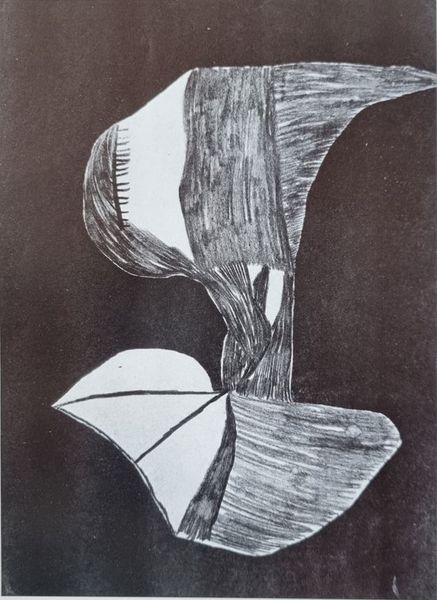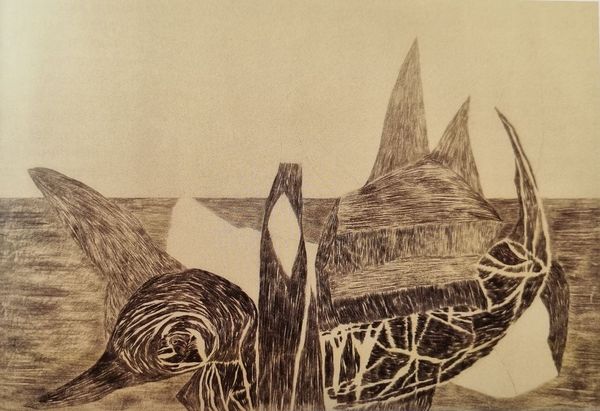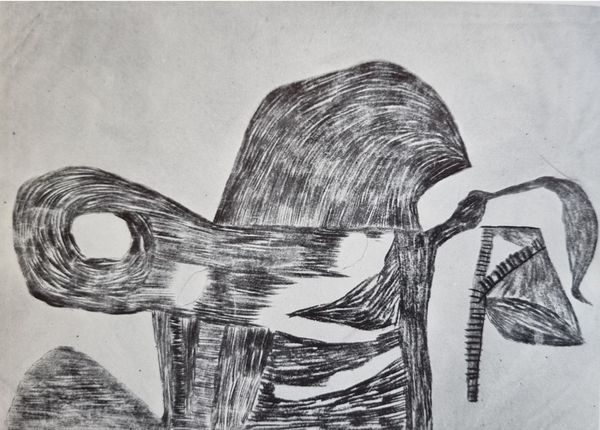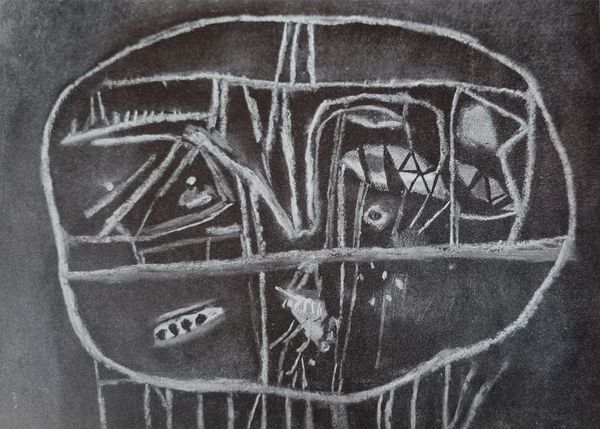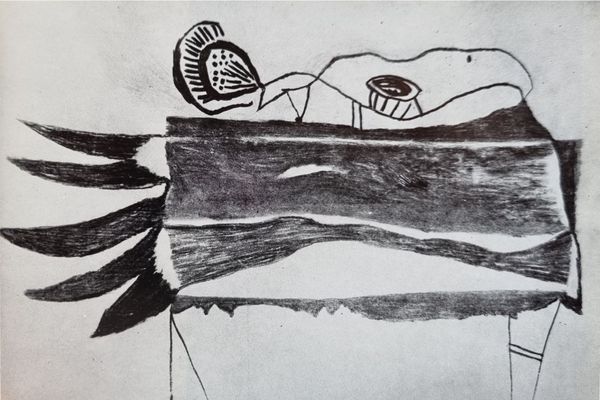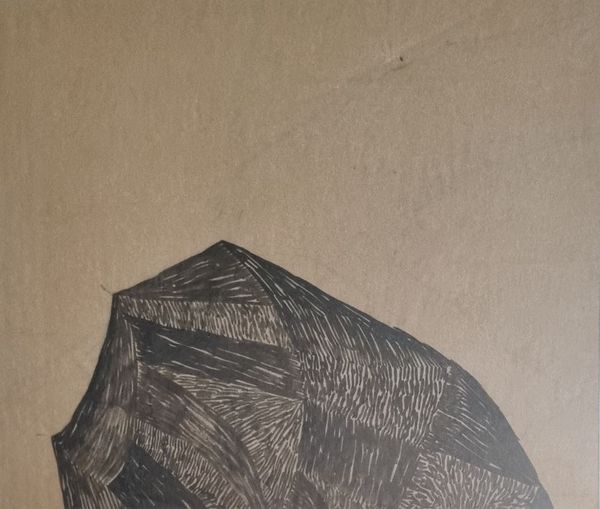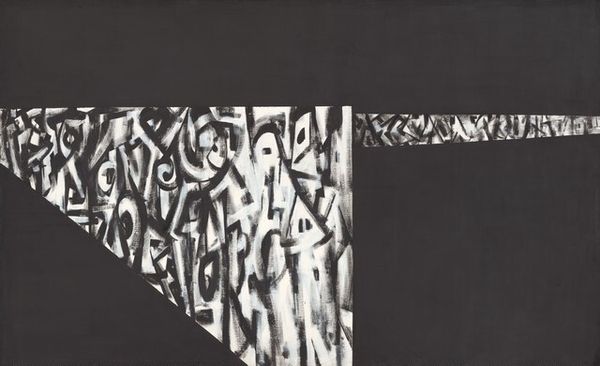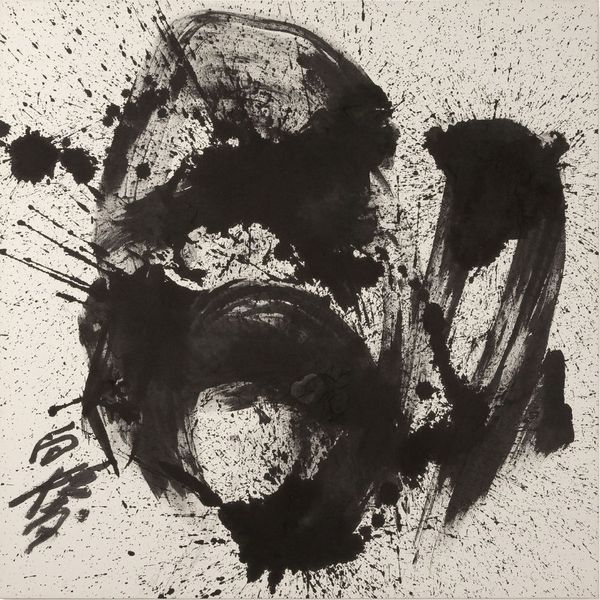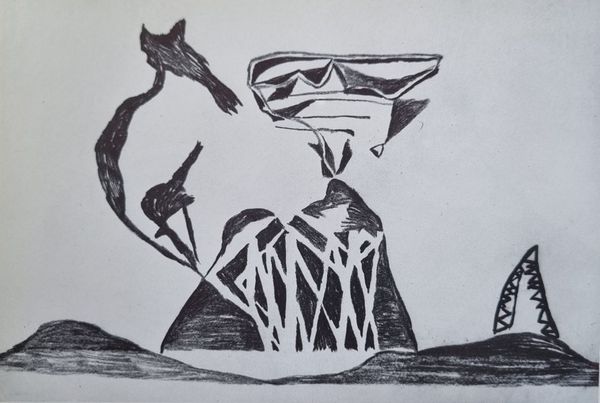
drawing, mixed-media, paper, ink, pencil
#
drawing
#
mixed-media
#
paper
#
ink
#
coloured pencil
#
underpainting
#
pencil
#
geometric-abstraction
#
abstraction
#
mixed medium
#
modernism
Copyright: Public domain
Editor: This is Vajda Lajos's "Composition" from 1939, created with pencil and Indian ink on paper. It has a really intriguing mix of geometric shapes and organic forms. What strikes me is how meticulously each section is rendered with such different techniques, particularly the varied use of hatching. How do you interpret this work? Curator: Notice how the "high art" of geometric abstraction is brought down to earth by the very visible labor of mark-making. Look at the contrasting textures achieved simply through different applications of pencil and ink. What does this juxtaposition of rigid form and handmade texture suggest to you about Vajda's engagement with material production? Editor: It's almost like he's showing us the process, isn't it? Exposing the effort that goes into creating even abstract forms. The repetitive strokes also give the feeling that maybe it has to do with mechanical or even industrial processes? Curator: Precisely. Now consider the context. 1939. Europe teetering on the brink of war. How might the austerity of materials – simple pencil and ink – and the emphasis on labor reflect the anxieties and material realities of that time? Was he thinking about making the art accessible in troubled times? Editor: So, the materials themselves, being readily available and relatively inexpensive, could be seen as a conscious choice to democratize the art-making process? The lack of color makes it almost stark, even... practical? Curator: Exactly! It's a move away from precious materials and towards an engagement with everyday realities. Consider the social commentary inherent in that choice. Perhaps, the subject here is not only formal relationships between the shapes and elements of abstraction but also an economic comment as well. What do you think you learned after we talked? Editor: I've learned to look beyond the forms themselves and to consider the artistic, cultural, and socio-political choices involved in their production. So that can help inform the experience of looking at art from then and now. Thank you!
Comments
No comments
Be the first to comment and join the conversation on the ultimate creative platform.
